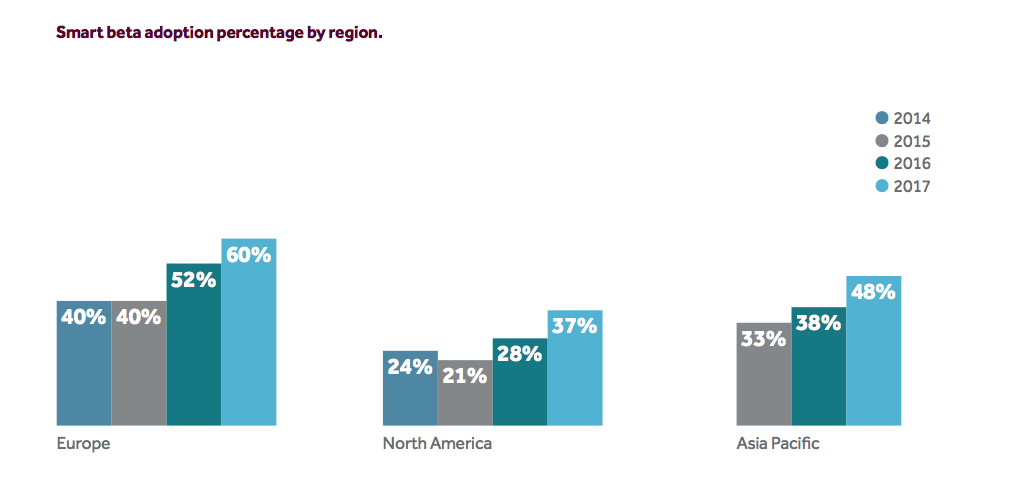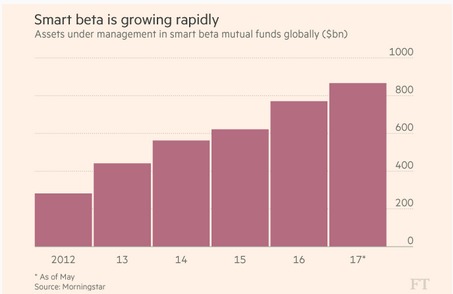A growing number of institutional financial advisers are jumping on the smart beta bandwagon.
Money managers are turning to smart beta strategies in droves, according to a FTSE Russell annual survey of 200 global institutional asset owners’ adoption and evaluation of smart beta indexing.

The percentage of financial advisers adopting smart beta strategies has been rising steadily around the world.

Europe Leads
Some 60% of asset managers in Europe are using smart beta products. The percentage in Asia is 48%, while it is 37% in North America.
Smart beta strategies are carefully constructed baskets that rank stocks by traits other than their market value, the standard methodology employed by traditional benchmarks, such as the Standard & Poor’s 500.
Instead, these products focus on “factors,” such as growth, value, dividends, volatility or other financial metrics that offer the possibility of market-beating performance and reduced portfolio risk.
Explosive Growth
Smart beta strategies have seen explosive growth in recent years, with assets under management expected to surpass the $1 trillion mark later this year.
Assets under management have grown 30% annually since 2012, according to an analysis by the Financial Times (subscription required) of Morningstar data.
Citibank sees smart beta assets topping $1.2 trillion by the end of next year.

Our Lineup
Investors looking for potentially enhanced returns and reasonable fees may want to give the Interactive Brokers Asset Management Smart Beta Portfolios a serious look.
Like any other financial product, however, investors need to carefully weigh the pros and cons. Smart beta strategies aren’t for every investor.
Yet, if you’re interested, we’re here to help. Here are some potential advantages of IB Asset Management’s Smart Beta Portfolios worth considering:
Low Cost: With an 8 basis point management fee, our Smart Beta portfolios are competitive with existing products in the marketplace.
Low Minimums: Portfolios have low investment minimums of just $5,000 through use of fractional shares.
Factor Tilts: These portfolios are designed for exposure to desirable stock characteristics, or factors, such as robust growth, valuation, quality, and dividends, selected through back-testing. Portfolios are also well diversified across sectors.
Rules-Based: The Interactive Brokers Asset Management Smart Beta Portfolios have filters to screen out undesirable stocks and a repeatable rules-based framework to determine position allocations.
Auto-Rebalancing: Portfolios are rebalanced quarterly; stocks sold are replaced by new ones with characteristics we deem more attractive.
Transparency: Investors have immediate, online access to information on holdings, trades and performance.
Photo Credit: Pictures of Money via Flickr Creative Commons



